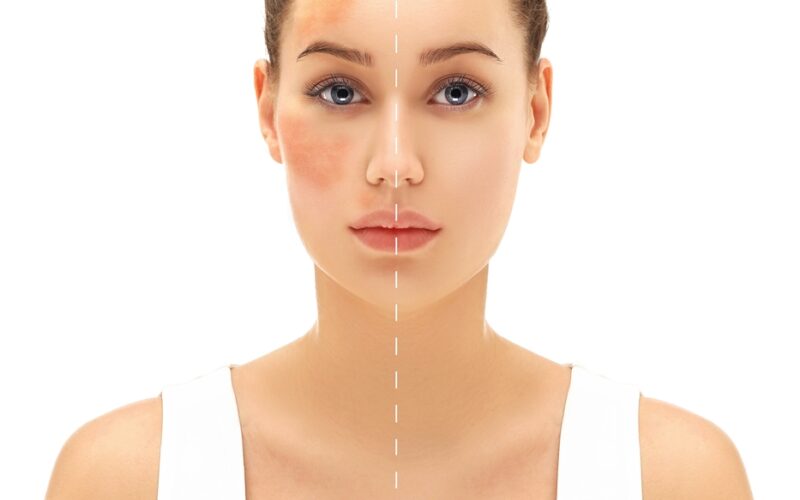Struggling with dark spots and hyperpigmentation? You’re not alone. These skin concerns affect people of all skin tones. Hydroquinone remains one of the most effective ingredients for addressing these issues. Let’s explore how this powerful ingredient works and what results you can expect.
What is Hydroquinone and What is it Used For?
Hydroquinone is a specialized skin-lightening compound with decades of use in dermatology. Doctors and skincare experts recommend it specifically for treating hyperpigmentation – areas where excess melanin has darkened the skin. As a leading skin lightening ingredient, hydroquinone effectively creates a more even skin tone by targeting:
- Melasma patches (often called “mask of pregnancy”)
- Dark marks left by acne or injuries
- Age spots and sun spots
- Freckles
- Overall uneven skin tone
You can find hydroquinone in different strengths, from 2% (available over-the-counter) to 4% or higher (requiring a prescription). Unlike surface bleaching agents, hydroquinone targets the actual pigment-producing process in your skin, making it especially effective for hyperpigmentation treatment.
How Does Hydroquinone Reduce Pigmentation?
To understand how hydroquinone works, we need to look at your skin’s pigment creation process. Melanin, which gives skin its color, comes from specialized cells called melanocytes. These cells rely on an enzyme called tyrosinase to produce melanin.
Hydroquinone tackles pigmentation in several ways. First, it blocks the tyrosinase enzyme, preventing the conversion of amino acids into melanin. This action reduces new melanin formation. It also affects melanosomes (tiny cellular factories where melanin is made), further decreasing melanin production.
Some studies suggest hydroquinone might even help break down existing melanin, though this effect isn’t as well-proven as its preventative benefits. Interestingly, hydroquinone works harder on actively pigmented areas, which explains why it fades dark spots without significantly lightening normal skin around them.
What Skin Concerns Can Hydroquinone Help With?
Hydroquinone effectively addresses many types of hyperpigmentation, though results vary depending on your specific concern. Melasma – those stubborn symmetrical patches triggered by hormones and sun exposure – responds well to hydroquinone, especially when combined with complementary ingredients.
Post-inflammatory hyperpigmentation (PIH) shows particularly good results. These dark marks left after acne or injuries fade dark spots much faster with hydroquinone than through natural healing alone. Sunspots, age spots, freckles, and general uneven tone also improve with consistent hydroquinone treatment.
Remember that hydroquinone targets specific areas of excess pigmentation rather than changing your natural overall skin tone.
How Long Does it Take to See Results From Hydroquinone?
Seeing results from hydroquinone requires patience. Most users notice this timeline:
- Weeks 2-4: Subtle fading begins
- Weeks 4-8: More noticeable lightening appears
- Weeks 8-12: Optimal results typically show for most hyperpigmentation types
Why does it take this long? Hydroquinone mainly prevents new melanin while your skin naturally sheds existing pigmented cells. Since your skin renews approximately every 28 days, you’ll need several renewal cycles to see significant improvement.
Consistency makes all the difference. Use the product exactly as directed without skipping applications. Taking “before” photos helps track progress, as daily changes might be too subtle to notice.
What Affects Hydroquinone’s Effectiveness?
Several factors determine how well hydroquinone works for you. While all skin tones can benefit from hydroquinone for hyperpigmentation, deeper skin tones require more careful use due to higher risks of irritation or rebound darkening.
Stronger concentrations (4%+) typically work faster than lower ones (2%) but bring increased irritation risk. Regular, consistent application proves crucial for best results, and sun exposure can reverse your progress by stimulating melanin production. Always use sunscreen when treating with hydroquinone.
Different hyperpigmentation types respond differently – melasma and PIH generally improve more readily than certain birthmarks. Supporting ingredients like retinoids, AHAs, and vitamin C enhance your results. Newer dark spots typically fade faster than older, more established ones.
When to Consider Other Treatments Alongside Hydroquinone
For stubborn cases, combination approaches often work better than hydroquinone alone. Retinoids speed up cell turnover and help hydroquinone penetrate deeper. Alpha hydroxy acids remove dead skin cells, allowing better product absorption. Antioxidants like vitamin C provide additional brightening benefits.
For resistant hyperpigmentation, professional treatments like chemical peels or laser therapy between hydroquinone courses might help. Adding soothing ingredients such as niacinamide, licorice extract, or aloe vera can reduce potential irritation.
For personalized advice on using hydroquinone effectively for your specific concerns, schedule a consultation with Heally today. Our healthcare providers can determine if hydroquinone suits your needs and guide you toward safe, effective use.
Sources
NIH: Dermatology: how to manage facial hyperpigmentation in skin of colour
NIH: Topical Hydroquinone for Hyperpigmentation: A Narrative Review
Wiley Online Library: Management of hyperpigmentation: Current treatments and emerging therapies

